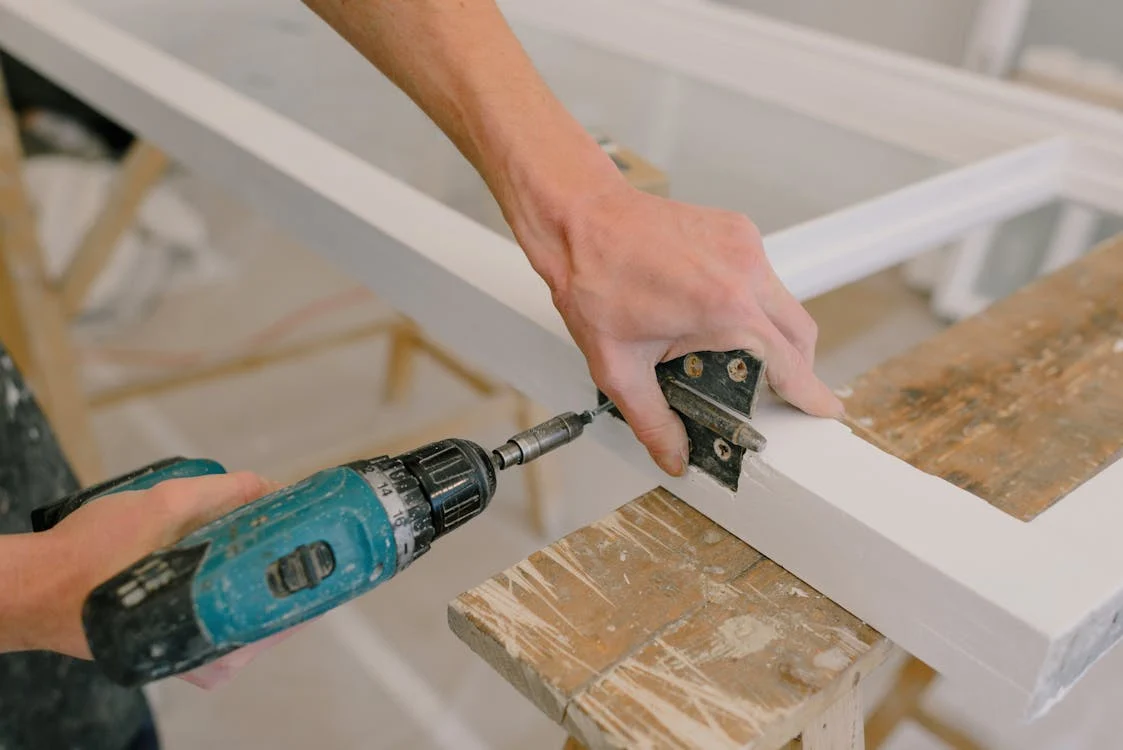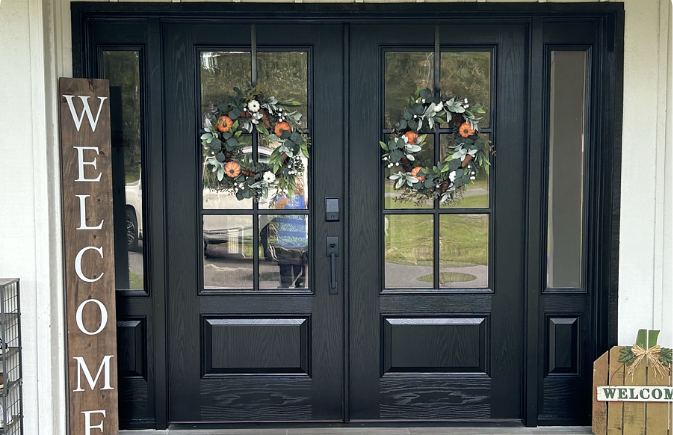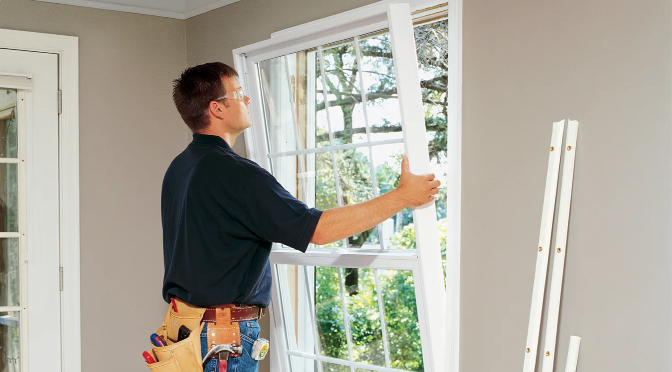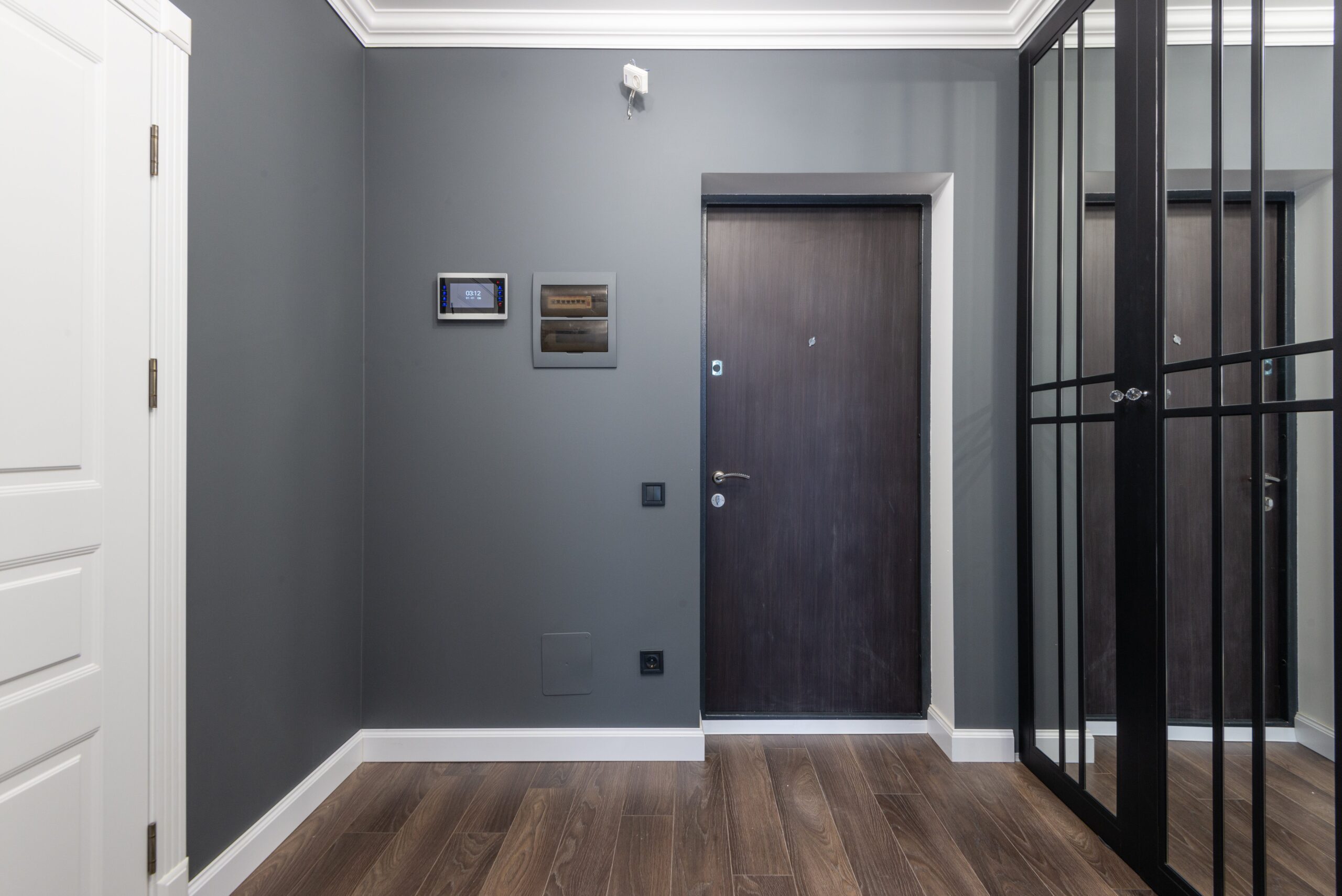
Installing New Windows: Here's How to Install Them Safely and Successfully
Installing new windows in your home comes with a bounty of benefits, from enhancing the aesthetic appeal to significantly improving energy efficiency. But it’s not just about picking the right style or glass type; proper window installation is crucial to reap these benefits. In this guide, we’ll provide you with a detailed walk-through for a safe and successful installation process.
When considering new windows, remember that safety is paramount. Installing windows requires precision and care to avoid accidents or damage to your property. It’s essential to handle tools correctly, follow the manufacturer’s guidelines, and ensure that everything is secured properly.
As you embark on this project, keep in mind that well-installed windows are more than just a visual upgrade—they’re also an investment in your home’s security and thermal performance.
To complement this information on window installation, you might explore our blog post on Security Beyond Locks: A Technical Deep Dive into Safe Window and Door Solutions for insights on enhancing your home’s safety features.
Additionally, understanding how different door materials can affect your home’s security and insulation is crucial. We have a comprehensive guide called Mastering the Art of Exterior Doors: A Technical Guide to Choosing the Right Material which unlocks technical insights into exterior door materials—wood, fiberglass, and steel. The guide provides detailed comparisons on durability, insulation properties, and maintenance requirements so that you can make an informed decision for your home’s security and energy efficiency.
By following along with us, you will ensure that your new windows not only look great but also perform at their best for years to come.
Understanding Different Types of Window Replacements
When you decide to upgrade your home with new windows, knowing the difference between sash replacement and full-frame replacement is crucial. Each method has its unique set of features that cater to different needs and situations.
Sash Replacement
Sash replacement involves removing the old sashes and installing new ones into the existing window frame. It is a less invasive process that can be ideal if your existing window frames are still in good condition and style compatibility isn’t an issue.
Pros:
- Less Expensive: Since you’re only replacing parts of the window, the cost is typically lower than a full-frame replacement.
- Quicker Installation: With fewer components to replace, installation can be faster, minimizing disruption to your home.
- Preservation: Ideal for historic homes where preserving the original frame is important.
Cons:
- Not a Solution for All Damage: If the window frame is damaged or out of square, a sash replacement won’t fix these issues.
- Limited Customization: You’re limited by the size and shape of the existing frames, which may not be ideal if you’re looking for a significant change.
Full-Frame Replacement
Full-frame replacement means the entire window, including frame, sills, and trim, is removed and replaced. This option is necessary when there’s extensive rot or damage to the window frame or if you want a completely new window style or size.
Pros:
- Complete Makeover: Allows for total design freedom and the opportunity to change the architectural look of your home.
- Addresses Hidden Issues: A full-frame installation lets you inspect and repair any hidden damage around the window opening.
- Higher Energy Efficiency: Provides an opportunity to enhance insulation around the window as you have access to the rough opening.
Cons:
- Higher Cost: It’s more expensive due to more materials needed and increased labor.
- Longer Installation Time: The process is more involved and will take longer than just replacing sashes.
When choosing between sash or full-frame replacement, consider factors like budget, condition of existing frames, desired energy efficiency improvements, aesthetic goals, and whether historical accuracy is important for your property. For those seeking modern solutions such as new construction windows that offer both aesthetic appeal and energy efficiency gains, exploring various options can provide valuable insights before making a final decision.
If DIY isn’t in your repertoire or you’re uncertain about tackling this project on your own, it might be beneficial to consult with experts like James from Factory Direct Windows and Doors. His insights on installation techniques could prove invaluable as you navigate this complex process.
Remember that while DIY can be rewarding, ensuring proper installation is critical for long-term performance and energy efficiency. If after assessing all factors you feel hesitant about DIY methods, do not hesitate to seek professional help. The investment in professional installation can save time and prevent costly mistakes down the line.
Choosing the Right Installers for Your New Windows
Selecting skilled window installers is crucial for the longevity and performance of your new windows. Here are some steps you can take to make sure you’re making the right choice:
- Research local professionals with a solid reputation. Look for reviews on independent platforms, and don’t hesitate to ask for references.
- Check their credentials. Verify that the installers are licensed and insured, protecting you against any mishaps during installation. You might also consider their affiliation with industry associations, which can be a testament to their commitment to quality standards.
- Evaluate their experience by asking about the number of years they’ve been in business and looking at past projects they’ve completed.
- Consider warranty offers as they reflect the confidence installers have in their workmanship.
- Look for clear quotes that provide comprehensive, transparent cost estimates.
If you’re leaning towards a DIY installation, proceed with caution. While this guide is tailored primarily for DIY methods, remember that window installation is complex and requires precision. Without proper skills, you could face issues like water leakage or energy inefficiency.
For those considering the DIY route:
- Educate yourself thoroughly through reputable sources before beginning your project.
- Gather all necessary tools and materials, ensuring they are of professional quality.
- Assess your own skill level realistically—overconfidence can lead to costly mistakes.
DIY installation might save on labor costs, but weigh this against the risk of incorrect installation that could nullify your warranty or reduce window efficiency.
Should you need professional assistance or advice at any point, don’t hesitate to contact experienced window specialists. Their expertise can prove invaluable, especially when tackling unforeseen challenges that often arise during home improvement projects.
Remember, whether you choose professional installation or take on the task yourself, prioritizing safe practices is non-negotiable. If at any stage the installation process seems beyond your capabilities, seeking professional help from FD Windows and Doors is a wise decision to ensure safety and efficacy.
By carefully selecting the right installer or preparing diligently for a DIY project, you set the stage for new windows that will enhance both your home’s energy efficiency and aesthetic appeal.
Step-by-Step Guide: How to Safely Install Replacement Windows
Installing new windows in your home is a task that requires careful planning and execution. If done correctly, it can enhance your property’s aesthetics and increase energy efficiency. This section provides a detailed, step-by-step guide on how to safely install replacement windows.
Step 1: Measuring for Replacement Windows
The first step in any window installation process is accurately measuring the existing window frame for your replacement window dimensions. Precise measurements are vital to ensure a perfect fit and prevent any potential complications during installation.
To do this effectively:
- Measure the width from jamb to jamb at three different points – top, middle, and bottom of the window.
- Measure the height from the sill to the head jamb at three different points – left, middle, and right.
- Always use the smallest measurement for width and height when ordering your new windows.
Step 2: Removing the Existing Window
Once you’ve taken all necessary measurements, it’s time to remove the old window. Start by cutting through any seals holding the existing window in place. Then, carefully remove all components including trim, sashes, frame, fasteners, and shims.
After these components have been removed, inspect the opening for any voids that need to be filled with insulation. This step ensures your new windows will be as energy-efficient as possible.
Step 3: Prepping the Opening
Next is preparing the opening for your new window installation. This involves cleaning the area thoroughly of any debris or dust and replacing damaged insulation or materials if required.
A crucial part of this process is applying flashing tape around the window opening. Flashing tape helps create a water-tight seal between your home’s exterior wall and your new window.
Step 4: Dry-Fitting the New Window
Before permanently installing your new window, conduct a dry-fit to ensure a proper alignment. Place the window in the opening and use shims to achieve a level and plumb position. Remember, it’s essential to check for square by measuring diagonally across the window – both measurements should be equal.
Step 5: Installing the Replacement Window
With everything set up, you’re now ready to install your replacement window. Start by applying a bead of caulk around the exterior of the window opening. After that, carefully place your new window into the opening, ensuring it fits snugly.
Once in position, drive screws through the window frame into your home’s structure according to the manufacturer’s instructions, and do not forget to place shims where necessary. Check for plumb and level again before moving on.
Insulation is key in this step as well — fill all gaps around the new window with foam insulation to prevent drafts and ensure optimal energy efficiency. Complete your installation by sealing the exterior with appropriate cladding.
Installing new windows might seem like a daunting task but following these steps can make it manageable. Just remember that each home is unique, so there might be some nuances not covered in this guide that apply to your specific project. In such cases, consulting professionals or referring to additional resources like those found on FD Windows and Doors Blog can provide further insights.
If you’re considering other home improvement projects alongside windows replacement, exploring options such as exterior doors could also add value to your property.
Safety Measures During Window Installation
When installing windows, it’s crucial to prioritize safety. These measures aren’t just suggestions; they’re necessary precautions to ensure your well-being and the well-being of those around you. Here are some important steps to follow:
1. Wear the Right Protective Gear
Always have the proper safety equipment on hand:
- Safety glasses: Protect your eyes from dust, debris, and accidental bumps.
- Work gloves: Provide a better grip and shield your hands from sharp edges and splinters.
- Hearing protection: Use it when using loud tools like drills or saws.
- Respirator or dust mask: Essential when working with insulation materials or in dusty areas.
2. Get Help When Needed
For larger windows, it’s best to have assistance. They can be heavy and difficult to manage on your own:
- A second person can help stabilize the window while you position it in place.
- Having support reduces the risk of dropping the window, which could cause damage or injury.
3. Use Ladders Safely
If you have to use a ladder:
- Ensure that it’s stable and firmly positioned on level ground.
- Avoid overstretching; always keep your balance within the ladder’s side rails.
- Follow the “three points of contact” rule: Maintain a grip with both hands and one foot or both feet and one hand while on the ladder.
4. Be Mindful of Tool Usage
Pay attention to tool safety:
- Before using any tool, inspect it for any damage or defects.
- Utilize each tool for its intended purpose only.
- Keep power cords away from cutting areas and wet surfaces.
5. Handle Glass with Care
Glass requires delicate handling:
- Lift glass panels with your palms and fingers spread out, avoiding excessive pressure on the glass with just your fingertips.
- Store unused glass panes securely in a location where they won’t tip over or break.
6. Understand Window Labels
Window labels provide valuable information about safety certifications and performance ratings. When purchasing new windows:
- Look for labels that indicate compliance with relevant industry standards such as those established by the American Architectural Manufacturers Association (AAMA) or the National Fenestration Rating Council (NFRC).
- Safety certifications are often represented by symbols; familiarize yourself with these symbols to understand the safety features of your windows.
By prioritizing these safety measures during window installation, you’re creating a secure environment for yourself and others. Remember, compromising on safety can result in accidents, injuries, or even long-term health issues.
💡 Tip: If you want more information about different window options and their energy efficiency benefits, consider exploring alternatives like versatile patio doors that cater to specific requirements. Additionally, if the idea of completely replacing windows feels overwhelming, researching replacement windows might present a viable solution that meets your needs.
Now that you’re aware of the essential safety practices for window installation, you can proceed with confidence!
Managing Expectations: What to Expect During Professional Window Installation
If you are considering professional installation for your new windows, it’s essential to know what to expect during the appointment. This knowledge can help you prepare your home and manage your expectations accordingly.
Before the Appointment
Upon hiring a professional window installer, they will typically schedule an initial visit to measure your windows. This step is critical to ensure that the new windows will fit perfectly into your existing frames. They may also assess the condition of your window frames and sills to identify any potential issues that could affect the installation process.
During this visit, it’s a good idea to discuss any concerns or questions you have about the installation process. The installers can provide valuable advice on how best to prepare your home for the procedure.
On the Day of Installation
On installation day, expect a team of installers from companies like FD Windows & Doors to arrive at your house with all the necessary tools and materials. You may need to clear a pathway for them to easily access each window and remove any fragile items from the area.
The installers will begin by removing the old windows and preparing the frame for the new ones. This process might involve cleaning the area, repairing any damaged parts, and applying flashing tape.
Once they’ve prepared the frame, they’ll dry-fit the new window using shims for proper alignment. After ensuring a perfect fit, they’ll secure it in place with screws and finish by sealing it off with caulk or foam insulation.
After Installation
After installation, professionals usually clean up their work area and dispose of your old windows unless otherwise directed. They’ll also perform a final check on each window to ensure it operates correctly and there are no leaks.
You should set aside time after installation to inspect each window yourself. Check for smooth operation, proper sealing, and look out for any cracks in the glass.
Remember, every project is unique, so these steps may vary slightly depending on your specific situation. However, understanding what typically happens during a professional window installation can help you feel more confident and prepared for the process.
Post-Installation Care Tips and Window Inspection Guidelines
After successfully installing your new windows, it’s equally crucial to ensure they are functioning correctly and will continue to perform well for years to come. This is where post-installation maintenance and window inspection play vital roles.
1. Inspect Your Windows Immediately
Immediately following the installation, inspect your new windows thoroughly. Look out for potential issues that may have occurred during the installation process. A few key things to check include:
- Operational Ease: Open and close the windows a few times to make sure they operate smoothly. Check whether latches and locks work properly, ensuring your window is secure.
- Broken Glass: Examine the glass in your window carefully. Any cracks or chips could compromise the integrity of your window, leading to energy inefficiency or even breakage in future.
- Sealing: Assess for any drafts coming through by running your hand around the edges of the window. If you feel air seeping through, there may be an issue with the sealing.
2. Establish a Regular Maintenance Routine
It’s also essential to establish a regular maintenance routine for your newly installed windows. Proper care can significantly extend their lifespan and maintain their appearance and functionality.
Here are some tips:
- Regular Cleaning: Keep both glass and frames clean. Use a soft cloth or sponge with mild soapy water for the frames and a glass cleaner for the glass. Avoid using harsh chemicals that could damage the window materials.
- Lubrication: Moving parts such as hinges, locks, and handles should be lubricated periodically to ensure smooth operation.
- Inspection: Make it a point to inspect your windows every few months. Check for signs of wear and tear, damaged seals, or anything that seems out of place.
Remember, while DIY techniques can solve minor issues, significant problems should always be addressed by professionals to avoid compromising your window’s performance or warranty.
Conclusion
Swapping old windows for new ones can significantly enhance your home’s aesthetics and energy efficiency. But remember, these benefits are only fully realized when the installation is done correctly and safely.
This guide serves as a comprehensive resource to help you navigate the process of successful window installation. From understanding different types of window replacements, and choosing the right installers, to taking safety measures during installation and post-installation care tips – we’ve covered it all.
- Safety First: Prioritizing safety during the installation process is non-negotiable. Always wear protective gear and ensure that you have necessary precautions in place, especially while handling large windows.
- Precision Counts: Accurate measurements and proper fitting are critical for ensuring your new windows function as they should. A slight error can lead to issues like drafts, leaks or operational problems down the line.
- Professional Guidance: While DIY methods are achievable with careful planning and execution, professional help is recommended for complex window configurations or if you’re unsure about any part of the process. Expert installers have the experience and tools needed to avoid common pitfalls.
- Post-Installation Care: Regular inspection and maintenance can extend the lifespan of your new windows. Understand what to look out for and how to properly care for them after installation.
In essence, achieving a successful window installation goes beyond merely inserting a new frame into an opening. It demands attention to detail, prioritizing safety and ensuring proper fitment. So equip yourself with this guide but don’t hesitate to seek professional advice when needed. Transform your home safely and confidently with your new windows!
Frequently Asked Questions
Proper window installation is crucial for both energy efficiency and aesthetics. It ensures that the windows function effectively, prevent air leakage, and contribute to the overall visual appeal of your home.
The two main types of window replacements are sash replacement and full-frame replacement. Sash replacement involves replacing the movable parts of the window, while full-frame replacement involves removing the entire window, including the frame.
You can assess the credibility of window installers by checking their experience, certifications, and customer reviews. It’s important to hire professionals with a proven track record of successful installations.
During window installation, it’s important to wear protective gear, work with a partner for large windows, and follow all manufacturer-recommended safety guidelines. Additionally, always look for relevant safety certifications when purchasing new windows.
During a professional window installation appointment, you can expect the installers to arrive with all necessary tools and materials. They will prepare the work area, remove old windows, install new ones, and ensure proper sealing and insulation. You should prepare your home by clearing the work area and removing any obstacles.
After installation, it’s important to inspect the windows for any issues, such as broken glass or improper operation. Regular maintenance practices include cleaning techniques and lubrication of moving parts to ensure longevity and optimal performance.
Recent Post
How to Install an Exterior Door? An exterior door in …
Choosing Replacement Windows When you start the process of Choosing …
Choosing Exterior Door Colors: The Ultimate Guide for Every Homeowner …
Installing New Windows: Here’s How to Install Them Safely and …
Get In Touch
We’d be happy to talk with you on the phone and fully understand your home upgrade. However, it is easiest if you start with a brief description of your project using this simple form:





